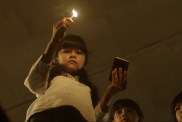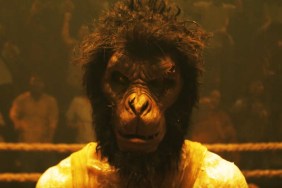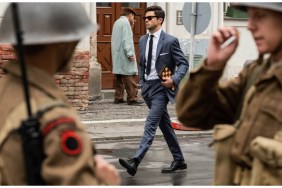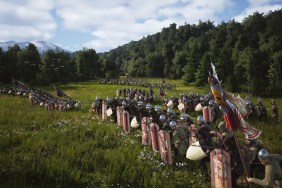Cast:
Saoirse Ronan as Lina Mayfleet
Harry Treadaway as Doon Harrow
Bill Murray as Mayor Cole
Tim Robbins as Loris Harrow
Martin Landau as Sul
Mary Kay Place as Mrs. Murdo
Liz Smith as Granny
Marianne Jean-Baptiste as Clary
Mackenzie Crook as Looper
Toby Jones as Barton Snode
Catherine and Amy Quinn as Poppy
Review:
Once Upon A Time there was a children’s story set in some strange far off place. That’s usually how it starts; the words may change but the song stays the same. It’s not the words that matter anyway so much as the sentiment behind them, that this all might have happened once and therefore might happen again, and in “City of Ember” it all begins The Day The World Ends.
The apocalypse certainly does seem close at hand some days, which gives this fairy tale a little topicalness to mix with its timelessness. The day the world ended, a sorrowful Tim Robbins tells us, a last bastion of humanity was buried deep in the ground to wait it out in a city built to last two hundred years when a box containing the exit instructions would open. But best laid plans, and all that. Instead the city’s expiration date comes and goes and life does what it always does when the apocalypse comes. It goes on.
What sounds like it could be the most depressing fairy tale since well, since any real fairy tale that hasn’t bowdlerized for consumption is actually quite charming in the hands of director Gil Kenan (“Monster House”). He and production designer Martin Laing (“Terminator Salvation”) have turned novelist Jeanne DuPrau’s concept into a living, breathing world that sounds like it should be Charles Dickens’ London by way of the Soviet Union, but isn’t. Despite the fact that the city is gradually running out of supplies and more and more of it is falling into disrepair, the citizens find ways to make do. When the phones give out, a new service is created whose members are essentially human messenger pigeons. Machinery is patched and patched and patched again.
They’re worried about the future of course, like people always are, especially because of the increasing number of blackouts. After going for two weeks without power after Hurricane Ike, I have a newfound appreciation for how scary it is to be without power for long periods when your whole infrastructure is built around it; to be stumbling around in the dark calling out someone’s name just as the citizens of Ember are forced to. Electricity really is the life blood of modern civilization and the heart of Ember, its mighty generator, is failing. Young Doon Harrow (Harry Treadaway) thinks he can fix it if he can just get in to see it, and switches places with messenger wannabe Lina Mayfleet (Saoirse Ronan) on the day jobs assigned in order to get his chance.
Like a lot of children’s literature, and most Hollywood films, none of this is left to subtext. Most of the first half of “City of Ember” is spent spelling out the setup as clearly as possible to make sure none of the potential audience misses a beat. Like a ’60’s comic book, characters always say exactly what is on their minds, even in the midst of doing it, and what’s on their mind is always plot points. Several conversations serve mainly as repetitions of major plot developments, just served up as interpersonal exchange; exposition and introspection become interchangeable.
It’s hard to blame the filmmakers for that, though screenwriter Caroline Thompson (“The Nightmare Before Christmas”) has done better work. It’s always a gamble, especially when aiming for kids, how much they’re going to understand and how much they’ll get lost in. They can be very sharp about this kind of thing, but they also have the attention spans of, well, kids. And movies you can’t follow aren’t movies you usually want to see again, or suggest to others, unless you’re a hardcore David Lynch fan.
But to anyone who is following things just fine it can feel a little patronizing. Which wouldn’t be a problem if it weren’t trying to appeal to the whole family, adults included. By nature of the setup, and the fantastic job the art department has done creating it, “City of Ember” is much closer to the real world than your average Once Upon A Time fairytale; if you squint real hard it’s not difficult to think this could all really happen. And what you get is a tone that’s very hard to pin down, as very serious things and high falutin’ ideas are dealt with, but very much from a kids’ point of view. It’s not a Disney film, but neither is it “Pan’s Labyrinth.” It’s trying to be a little of both and neither at the same time, and the tap dance that requires can be felt throughout.
Perhaps unintuitively, that point of view is also the film’s other real strength, outside of its stellar production design. Thompson has sidestepped a lot of the worst traps young characters fall prey to. Doon and Lina have lived hard lives, and they’re certainly capable of feeling the pain of their circumstances, but they don’t wallow in their misery or angst over the problems they face. That wouldn’t be the Ember way. Instead they pick themselves up and get on with doing what must be done. Treadaway and Ronan are really quite good, even with some flat dialogue early on. Despite an impressive supporting ensemble, carrying the film is solidly on their shoulders as they appear in almost every minute of it. And they’re up to it, especially Ronan, who has the most emotional turmoil to deal with.
And it’s good thing too because, despite a great cast, the adults ain’t around much. Which is fair since it’s not really their story, but some of them especially the permanently chipper Mary Kay Place and the permanently belabored Martin Landau you just wish you could see more of. They sum up the idea of Ember and the people who live there so perfectly. Especially Landau’s Sul who, when asked what to do about the city’s imminent collapse replies, “We cope.”
Murray, on the other hand, is somewhat wasted as the films villainous mayor. Part of that is because the main story is about the search for an exit from Ember and the mayor and his doings are essentially a subplot that add some excitement to the second half but don’t really connect with what’s going on. There’s a good character there Lina’s first visit to his office is fantastic but it feels like we’re only getting the tip of the iceberg. If perhaps the mayor had been actively stopping people from trying to leave, and even had some necessary knowledge Lina and Doon needed that he was aware of, he could have had a real purpose and brought something to the story. Instead he’s just not in the film enough, or involved enough in the goings on. And Robbins seems to be stuck in permanent sourpuss mode regardless of the nature of the scene he’s in.
Still, a lot of thought and effort has been put into “City of Ember” and there are lots and lots of great little details and moments in it. But the whole is never more than the sum of its parts, though not for lack of trying. It wants to be an adventure story and a fable and a mystery, and a few more things besides, all at the same time and never quite decides what it is. Even if there is a feeling of missed potential in “City of Ember” there’s also a great deal to enjoy about it, and it’s definitely worth a look. The strange tone it strikes means it won’t be to everyone’s taste, and if it turns out it’s not to yours, you can tell yourself it’s not the end of the world and move on.










